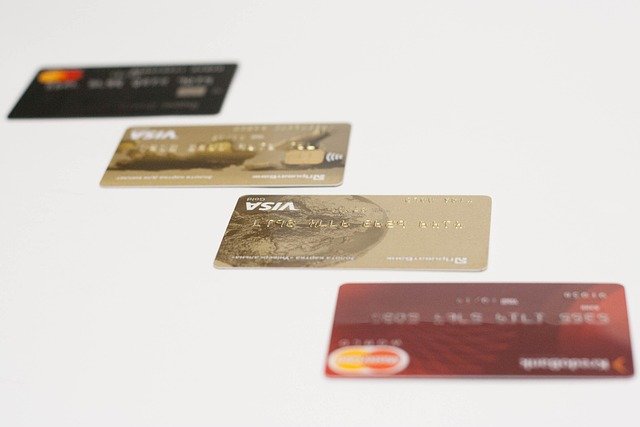How to Choose a Credit Card
Choosing a credit card involves understanding your spending habits, income level, and financial priorities. Learn how to compare card features like interest rates, annual fees, and billing cycles to find an option that supports your daily purchases, budgeting, or credit-building goals.

Understanding Different Credit Card Types
Credit cards come in several categories, each designed to serve specific financial needs and preferences. Rewards cards offer points, miles, or cash back on purchases, making them ideal for regular spenders who pay off balances monthly. Balance transfer cards feature low or zero introductory APRs to help consolidate debt. Secured cards require a security deposit and help build or rebuild credit. Student cards offer features tailored to college students with limited credit histories, while business cards provide tracking tools and rewards on business expenses. Premium cards carry higher annual fees but offer luxury perks like airport lounge access and travel insurance. Knowing which category aligns with your primary goal—whether earning rewards, building credit, or managing debt—narrows your search considerably.
Assessing Your Spending Habits and Financial Goals
Before applying for any credit card, analyze your monthly spending patterns. Track where you spend most money—groceries, dining, travel, or general purchases. This information helps identify which rewards structure would benefit you most. Also, consider your credit score, as it determines which cards you can qualify for and what interest rates you’ll receive. Be honest about your payment habits—if you typically carry balances, prioritize low interest rates over rewards. Set clear financial goals: Are you looking to build credit, earn travel rewards, finance a large purchase with a 0% APR period, or consolidate existing debt? Your primary objective should guide your selection process.
Comparing Interest Rates and Fee Structures
The Annual Percentage Rate (APR) represents the yearly cost of borrowing money if you carry a balance. Credit card APRs typically range from 13% to 27%, depending on your creditworthiness and the card type. Beyond the standard purchase APR, cards may have different rates for balance transfers, cash advances, and penalty situations. Annual fees can vary from $0 to $700+, with premium rewards cards charging higher fees to offset their benefits. Other potential costs include balance transfer fees (typically 3-5% of the transferred amount), foreign transaction fees (around 3% for international purchases), late payment penalties, and over-limit fees. Calculate whether the benefits outweigh the costs based on your expected usage and payment behavior.
Evaluating Rewards Programs and Benefits
Credit card rewards generally fall into three categories: cash back, points, or miles. Cash back cards return a percentage of your purchases—typically 1-5% depending on spending categories. Points-based systems allow redemption for various items, gift cards, or statement credits. Miles cards benefit frequent travelers, offering rewards redeemable for flights, hotels, or travel upgrades. Look beyond the base rewards rate to bonus categories that align with your spending habits. Also consider additional benefits like purchase protection, extended warranties, rental car insurance, or travel perks. For maximum value, choose a card with rewards you’ll actually use rather than one with the highest advertised earning rate in categories where you rarely spend.
Understanding Credit Card Terms and Conditions
Credit card agreements contain critical information that affects your experience with the card. The billing cycle determines when purchases appear on your statement and when payment is due. Grace periods—typically 21-25 days—allow you to avoid interest charges by paying your balance in full. Credit limits impact your spending capacity and credit utilization ratio. Many cards offer introductory promotions like 0% APR periods or bonus rewards, but these come with specific requirements and expiration dates. Review redemption policies for rewards programs, including point values, expiration rules, and transfer options. Understanding these terms helps you avoid unexpected charges and maximize card benefits.
Comparing Popular Credit Card Options
When selecting a credit card, comparing specific offerings can help clarify which features matter most to you. Below is a comparison of different credit card types based on their typical features and costs.
| Card Type | Typical Annual Fee | Average APR Range | Best For | Notable Features |
|---|---|---|---|---|
| Cash Back | $0-$95 | 15-26% | Everyday spending | 1-5% back on purchases |
| Travel Rewards | $95-$550 | 16-24% | Frequent travelers | Miles, travel insurance, no foreign fees |
| Balance Transfer | $0-$95 | 0% intro for 12-21 months, then 14-25% | Debt consolidation | Long 0% intro periods |
| Secured | $0-$49 | 17-25% | Credit building | Refundable deposit, credit reporting |
| Student | $0 | 15-25% | College students | Lower approval requirements, student-specific perks |
| Business | $0-$595 | 14-25% | Small business owners | Business expense categories, employee cards |
Prices, rates, or cost estimates mentioned in this article are based on the latest available information but may change over time. Independent research is advised before making financial decisions.
Making Your Final Decision
After researching options that match your spending habits and financial goals, narrow your choices to a few cards. Check your credit score to ensure you’re likely to qualify. Consider applying for the card that best balances rewards with fees and interest rates based on your specific situation. For those new to credit or rebuilding their score, secured or student cards may be the most accessible options. If you’re confident in your creditworthiness, choose between cash back and travel cards based on your lifestyle. Remember that responsible use of any credit card—paying on time and keeping balances low—is more important than which card you select. The best card is ultimately the one that fits your financial habits and helps you achieve your goals without encouraging overspending.




